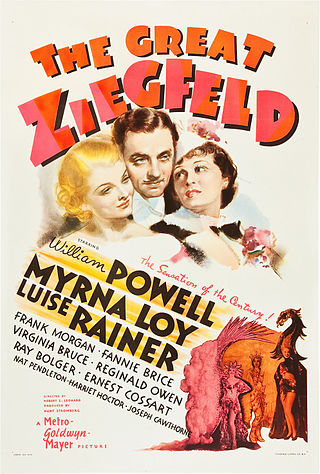
The Great Ziegfeld is a 1936 American musical drama film directed by Robert Z. Leonard and produced by Hunt Stromberg. It stars William Powell as the theatrical impresario Florenz "Flo" Ziegfeld Jr., Luise Rainer as Anna Held, and Myrna Loy as Billie Burke.
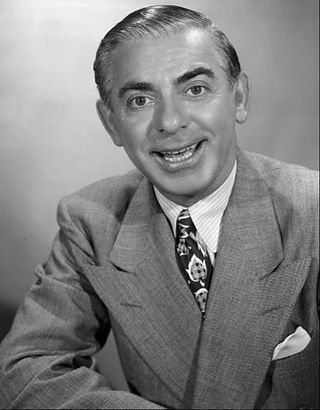
Eddie Cantor was an American comedian, actor, dancer, singer, songwriter, film producer, screenwriter and author. Familiar to Broadway, radio, movie, and early television audiences, this "Apostle of Pep" was regarded almost as a family member by millions because his top-rated radio shows revealed intimate stories and amusing anecdotes about his wife, Ida, and five daughters. Some of his hits include "Makin' Whoopee", "Ida ", "If You Knew Susie", "Ma! He's Making Eyes at Me", “Mandy”, "My Baby Just Cares for Me”, "Margie", and "How Ya Gonna Keep 'em Down on the Farm ?" He also wrote a few songs, including "Merrily We Roll Along", the Merrie Melodies Warner Bros. cartoon theme.

The Ziegfeld Follies were a series of elaborate theatrical revue productions on Broadway in New York City from 1907 to 1931, with renewals in 1934, 1936, 1943, and 1957. They became a radio program in 1932 and 1936 as The Ziegfeld Follies of the Air.

Berkeley William Enos, known professionally as Busby Berkeley, was an American film director and musical choreographer. Berkeley devised elaborate musical production numbers that often involved complex geometric patterns. Berkeley's works used large numbers of showgirls and props as fantasy elements in kaleidoscopic on-screen performances.
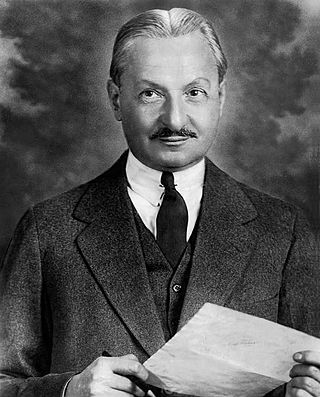
Florenz Edward Ziegfeld Jr. was an American Broadway impresario, notable for his series of theatrical revues, the Ziegfeld Follies (1907–1931), inspired by the Folies Bergère of Paris. He also produced the musical Show Boat. He was known as the "glorifier of the American girl". Ziegfeld is a member of the American Theater Hall of Fame.

A chorus line is a large group of dancers who together perform synchronized routines, usually in musical theatre. Sometimes, singing is also performed. While synchronized dancing indicative of a chorus line was vogue during the first half of the 20th century, modern theatre uses the terms "ensemble" and "chorus" to indicate all supporting players in a stage production.
That's Entertainment! is a 1974 American compilation film released by Metro-Goldwyn-Mayer to celebrate the studio's 50th anniversary. The success of the retrospective prompted a 1976 sequel, the related 1985 film That's Dancing!, and a third installment in 1994.

Ziegfeld Follies is a 1945 American musical comedy film released by Metro-Goldwyn-Mayer, primarily directed by Vincente Minnelli, with segments directed by Lemuel Ayers, Roy Del Ruth, Robert Lewis, and George Sidney, the film's original director before Minnelli took over. Other directors that are claimed to have made uncredited contributions to the film are Merrill Pye, Norman Taurog, and Charles Walters. It stars many MGM leading talents, including Fred Astaire, Lucille Ball, Lucille Bremer, Fanny Brice, Judy Garland, Kathryn Grayson, Lena Horne, Gene Kelly, James Melton, Victor Moore, William Powell, Red Skelton, and Esther Williams.

Claire Dodd was an American film actress.

Charles Powell Walters was an American Hollywood director and choreographer most noted for his work in MGM musicals and comedies from the 1940s to the 1960s.

Robert Zigler Leonard was an American film director, actor, producer, and screenwriter.
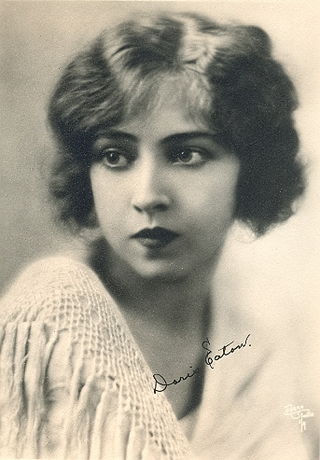
Doris Eaton Travis was an American dancer, stage and film actress, dance instructor, owner and manager, writer, and rancher, who was the last surviving Ziegfeld Girl, a troupe of acclaimed chorus girls who performed as members in the Broadway theatrical revues of the Ziegfeld Follies.

Guys and Dolls is a 1955 American musical film starring Marlon Brando, Jean Simmons, Frank Sinatra, and Vivian Blaine. The picture was made by Samuel Goldwyn Productions and distributed by Metro-Goldwyn-Mayer (MGM). It was directed by Joseph L. Mankiewicz, who also wrote the screenplay. The film is based on the 1950 Broadway musical by composer and lyricist Frank Loesser, with a book by Jo Swerling and Abe Burrows, which, in turn, was loosely based on "The Idyll of Miss Sarah Brown" (1933) and "Blood Pressure", two short stories by Damon Runyon. Dances were choreographed by Michael Kidd, who had staged the dances for the Broadway production.

Toby Wing, "Toby" being an old family nickname, was an American actress and showgirl, once called "the most beautiful chorus girl in Hollywood".
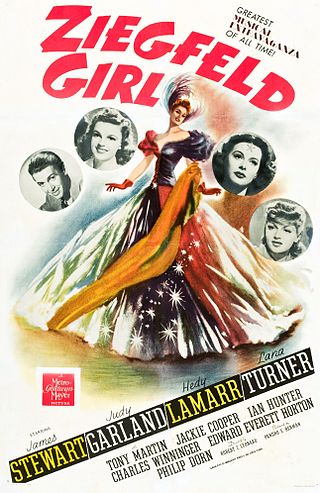
Ziegfeld Girl is a 1941 American musical film directed by Robert Z. Leonard and starring James Stewart, Judy Garland, Hedy Lamarr, Lana Turner, Tony Martin, Jackie Cooper, Eve Arden, and Philip Dorn. The film, which features musical numbers by Busby Berkeley, was produced by Metro-Goldwyn-Mayer.

Whoopee! is a 1930 American pre-Code comedy musical Western film photographed in two-color Technicolor. It was directed by Thornton Freeland and stars Eddie Cantor, Ethel Shutta and Eleanor Hunt. The film's plot closely follows that of the 1928 stage show produced by Florenz Ziegfeld.

Jean Howard was an American actress and professional photographer. She was born in Longview, Texas and died in Beverly Hills, California.
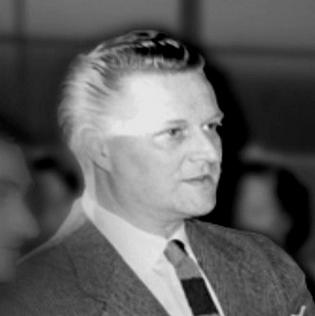
Robert Alton was an American dancer and choreographer, a major figure in dance choreography of Broadway and Hollywood musicals from the 1930s through to the early 1950s. He is principally remembered today as the discoverer of Gene Kelly, for his collaborations with Fred Astaire, and for choreographic sequences he designed for Hollywood musicals such as The Harvey Girls (1946), Till the Clouds Roll By (1946), Show Boat (1951), and White Christmas (1954).

Barbara Weeks was an American film actress who performed primarily in Hollywood productions of the 1930s.
Richard Blaine Williams was an American singer. He and his brothers, Bob, Don, and Andy Williams, performed as a quartet, The Williams Brothers.


















